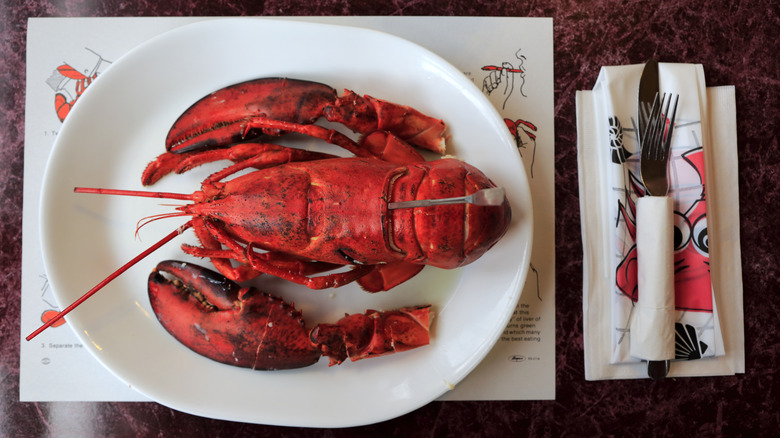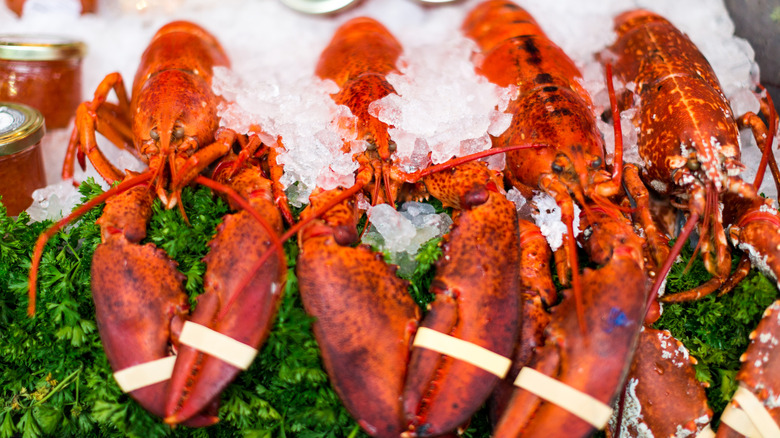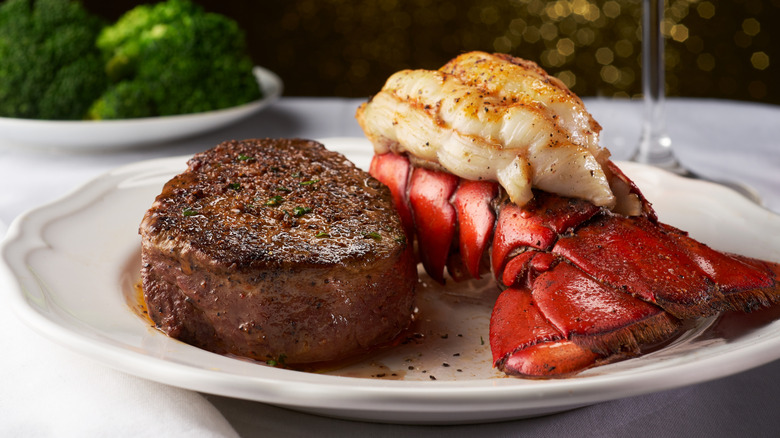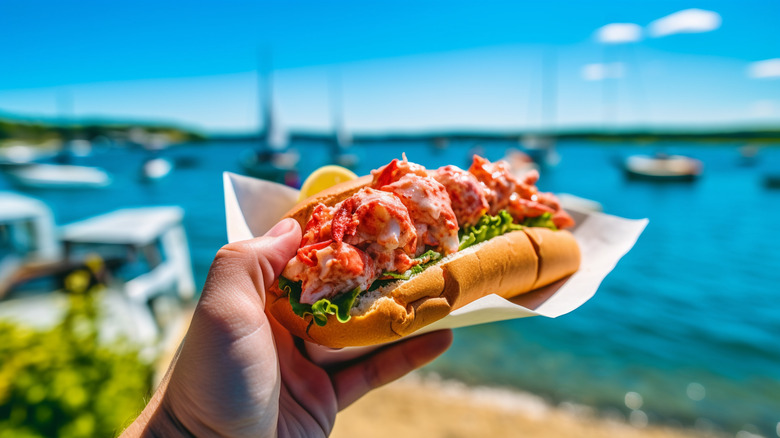Why Does Lobster Cost So Much?
There's a scene in "Mystic Pizza" where Julia Roberts' character, Daisy, opens up her mother's fridge and it's filled with lobster. Growing up in a fishing town, these crustaceans were plentiful. When Daisy later goes to have a fancy dinner with her rich boyfriend's family, she can't help but chuckle when the kitchen staff places a plate of lobster in front of her. This is how the other half lives? Dressing up the giant sea insect that she can't even stand to eat anymore and serving it as a high-class dinner? Maybe things aren't all that they seemed from the outside.
I think about that scene every time I see a supermarket lobster tail priced at $20, or a food truck lobster roll selling for $30 or more. While these things are certainly marked up in the Midwest and other non-coastal regions, they're still costly wherever you go, and lobster is generally known as a high-end, special-occasions-only treat. So how did it go from an unappealing surplus item on the shores to an expensive delicacy?
What affects the cost of lobster?
According to Seafood University, lobster did in fact used to be seen as a poor man's meal. That's in part because in colonial New England, lobsters were so plentiful that they'd often wash up on shore, making them easy to catch. But after decades of New Englanders taking all the lobsters they could get their claws on, not to mention the continuing growth of the U.S. population, the lobster population started to dwindle, creating scarcity and making them a more in-demand item.
Modern-day lobster fishing is a complicated process. Insider reports that this is in part because the crustaceans require so much maintenance: they grow slowly, eat a lot, and are susceptible to diseases. A lot of technology goes into not only encouraging the lobsters' healthy growth but also maintaining their health as they're shipped alive across the country.
Other factors driving up the price of lobster
Time of year affects the price, too. Lobsters are in such high demand for holidays like Valentine's Day, that the prices get even more jacked up in the months after Valentine's Day, when the lobster supply is diminished. It's in the third week of April or so, when the water warms up and lobsters become more active, that prices start to drop again.
Public perception of lobster as an expensive food is also at play. Because the dish is now considered a delicacy, that means if one lobster seller drops the price, it could have a domino effect on the entire industry. So lobsters are sold at an artificially high price simply because they can be.
And of course lobster isn't immune from the issues plaguing pricing — like decreased labor in the lobster industry, supply chain issues, and inflation because of rising gas prices for shipping lobsters across the country. That doesn't just mean a fancy lobster dinner will cost more, but also the more humble lobster roll.
The lobster roll's rise to popularity
So how does one of the most expensive proteins end up getting served as a sandwich sold from a shack on the beach? That's not the same fate we'd allow for a Wagyu steak, for instance.
Once again, this harkens back to the seafood's origins as a poor man's food, or at least the status of those who spend their lives fishing for them. Maine-based magazine Down East offers a definitive oral history on the lobster roll as a regional specialty, and in it Luke's Lobster president Ben Conniff says, "I'm pretty darned sure the first person [to make a lobster roll] was a lobsterman who had a bunch of leftover lobster and some bread."
While the exact origins are murky, the first lobster roll is understood to have been made sometime in the early 1900s, likely by a lobsterman. It first appeared on a menu, however, in 1929 in Milford, Connecticut at a place called Perry's as a hot lobster roll, hot lobster meat doused in butter in a bun. From there it evolved into the cold lobster salad roll, which is more reminiscent of what is popular today.
Jasper White is singled out as the first person to feature a lobster roll on an upscale menu at his fine dining establishment, Jasper's, in the 1980s. From there, the trend found its way to New York, and once it hit there, lobster rolls were a national sensation. Now different regions put their own unique twists on it, and even though it's a sandwich, it remains highly priced because of that popularity. Which makes sense, when you think about it: There are now even more places to which the limited supply of lobster must be distributed.



